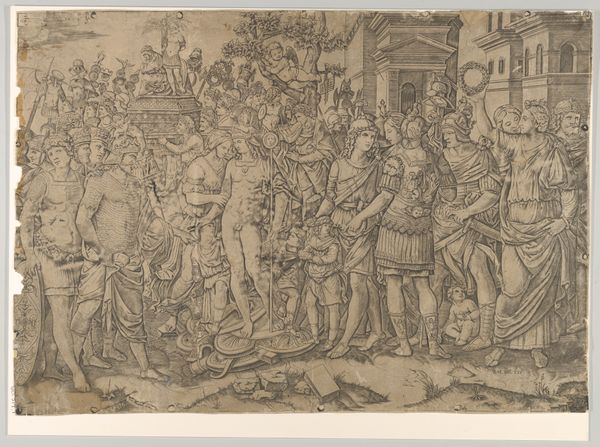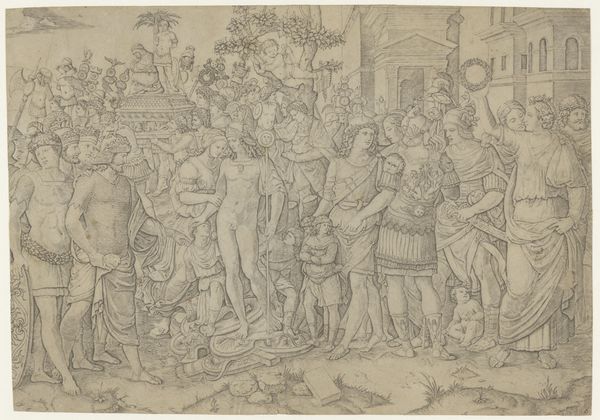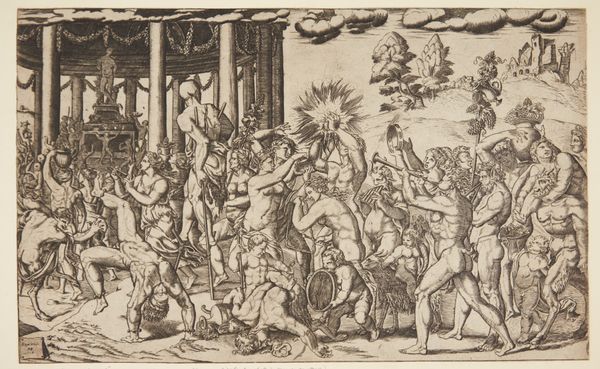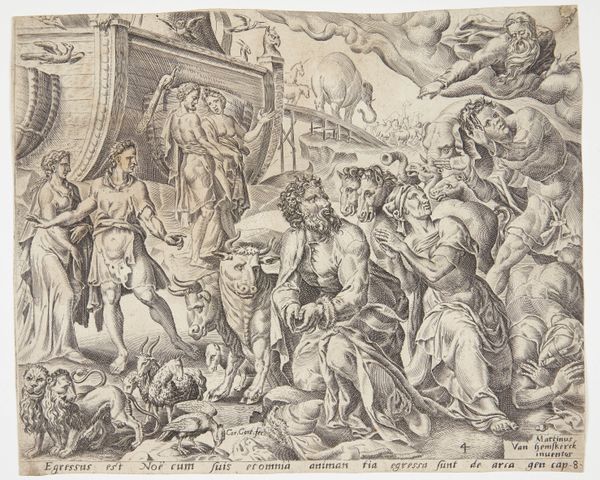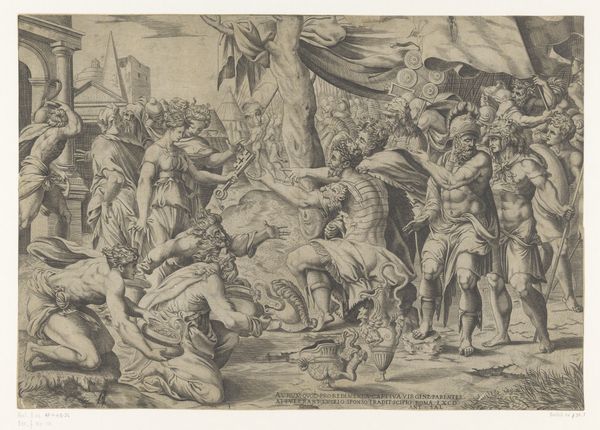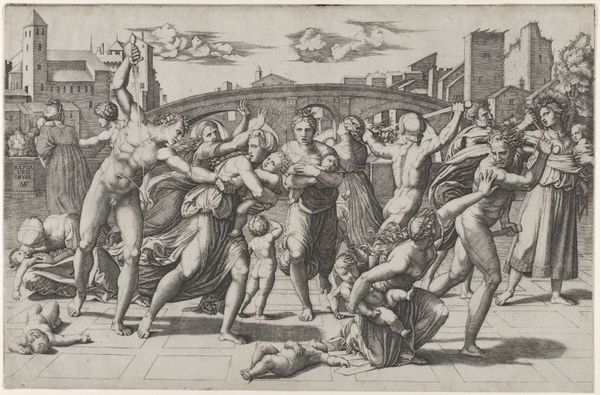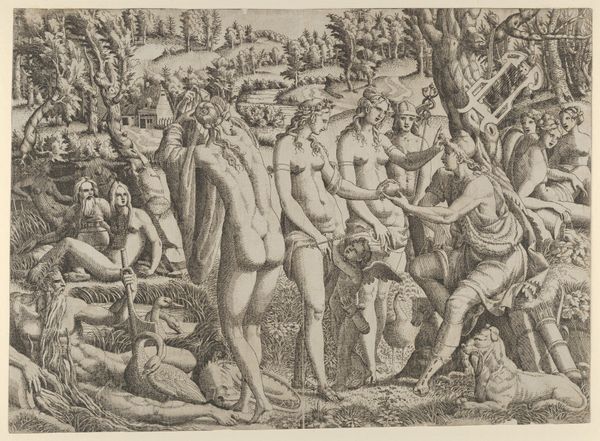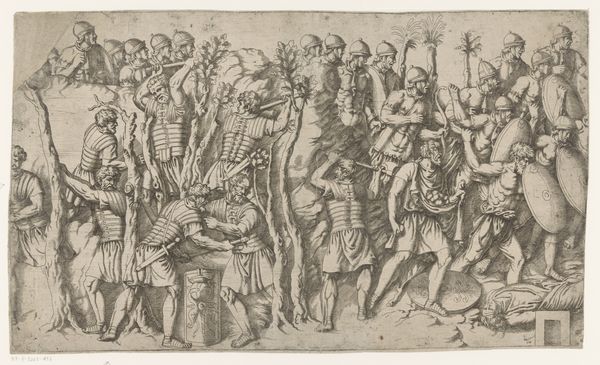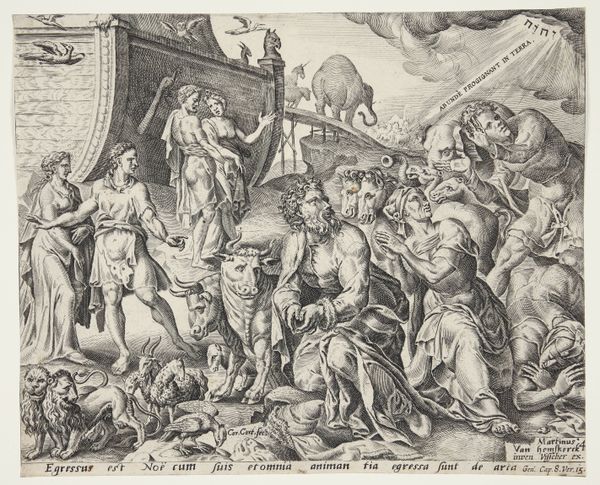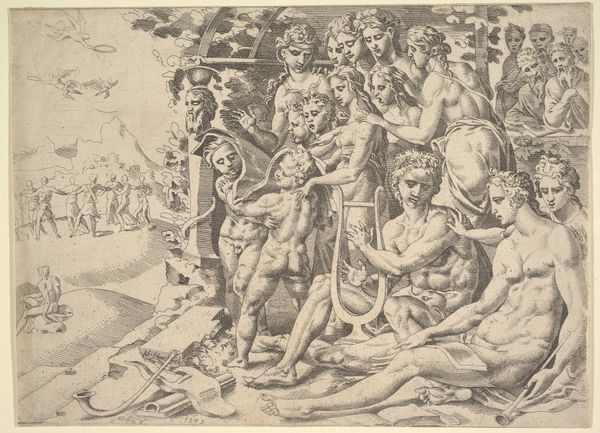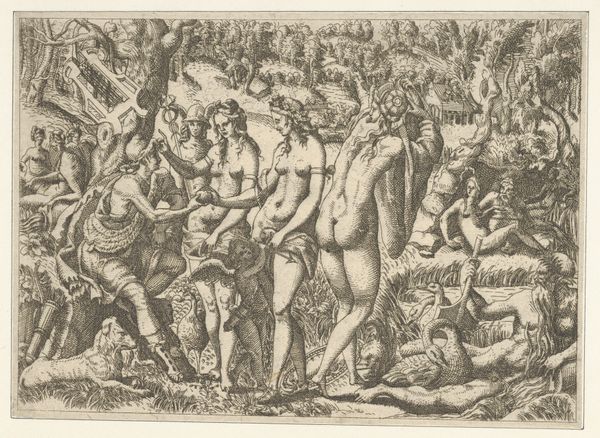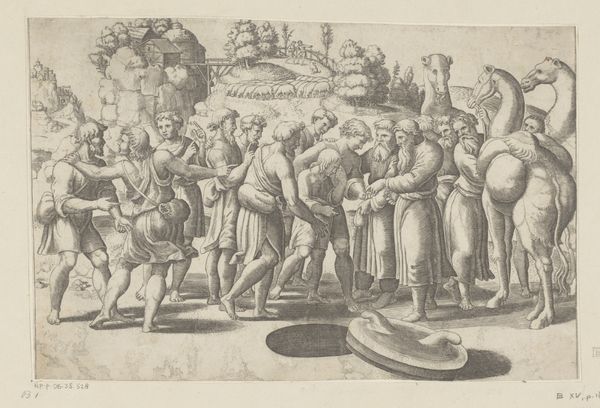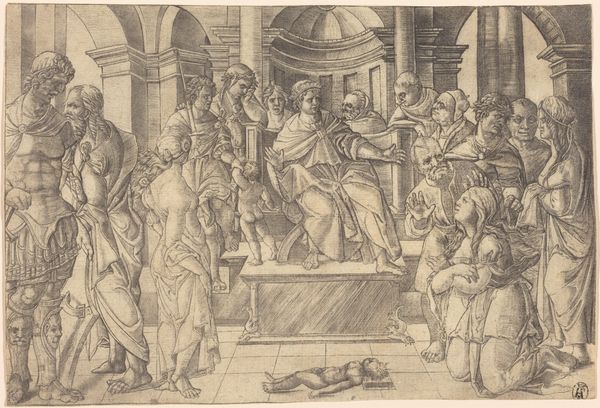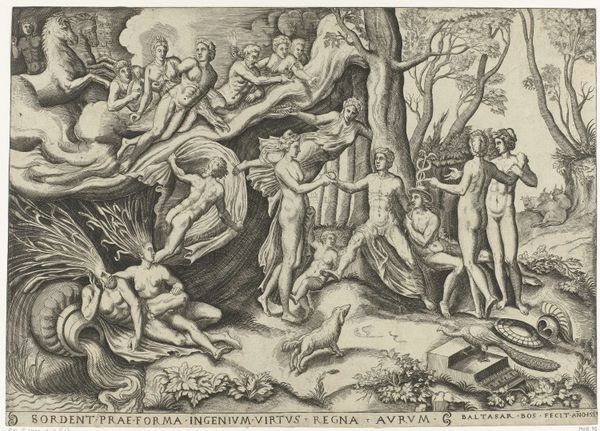
The triumph of a Roman Emperor; a young naked hero stands at center on a pile of armor; a woman at right holds aloft a laurel wreath 1505 - 1515
0:00
0:00
drawing, print, engraving
#
drawing
#
allegory
#
pen drawing
# print
#
pen illustration
#
pen sketch
#
classical-realism
#
figuration
#
history-painting
#
armor
#
italian-renaissance
#
nude
#
engraving
#
male-nude
Dimensions: Sheet: 14 × 20 in. (35.5 × 50.8 cm)
Copyright: Public Domain
Curator: Here we have a work by Marcantonio Raimondi, dating roughly from 1505 to 1515. It's called "The Triumph of a Roman Emperor; a young naked hero stands at center on a pile of armor; a woman at right holds aloft a laurel wreath," and it's currently housed at the Metropolitan Museum of Art. It’s a print, made with engraving techniques. Editor: It’s busy! My first impression is of overwhelming detail and theatrical staging. It almost feels claustrophobic, despite the grandeur of the subject. There's so much to visually process. Curator: Raimondi was a master engraver, highly influential in disseminating the style of the Italian Renaissance. The print draws heavily on classical imagery, referencing the tradition of Roman triumphs and victory celebrations. The nude hero at the center embodies idealized male form, and the laurel wreath symbolizes honor and glory, linking it to ideas of immortality. Editor: The naked hero on a pile of armor really drives home the theme of triumph, doesn’t it? He is vulnerable, but invincible. I am intrigued by the compositional choices—look at the repetition of vertical lines in the figures and architectural backdrop which lends structure but somehow heightens the impression of a dense, packed scene. It's a fascinating juxtaposition. Curator: Yes, that layering creates a psychological intensity, reminding us of how the hero and the empire's values permeated Roman culture. Every element—from the armor at the hero's feet to the procession into a temple honors these symbolic weights of the state and male strength. Even the cherubs are in service to the emperor’s image. Editor: And that contrast! There's so much happening formally. Note how the engraving captures a range of tones, from the luminous skin of the figures to the deep shadows that define their musculature. You can discern the meticulous skill of Raimondi by the varying weights and patterns he applied with each etching stroke. Curator: The engraving served as an extremely successful vehicle for this particular classical ideal. Its power resides not just in technical execution, but its transmission of archetypes tied to leadership. Raimondi’s triumph connects deeply with cultural desires to celebrate power. Editor: Indeed. By focusing our analysis on its composition, we not only appreciate his masterful technical achievement in Renaissance printmaking, but also unveil a visual argument which touches the raw nerves of collective ambitions of empire, victory, and legacy.
Comments
No comments
Be the first to comment and join the conversation on the ultimate creative platform.
